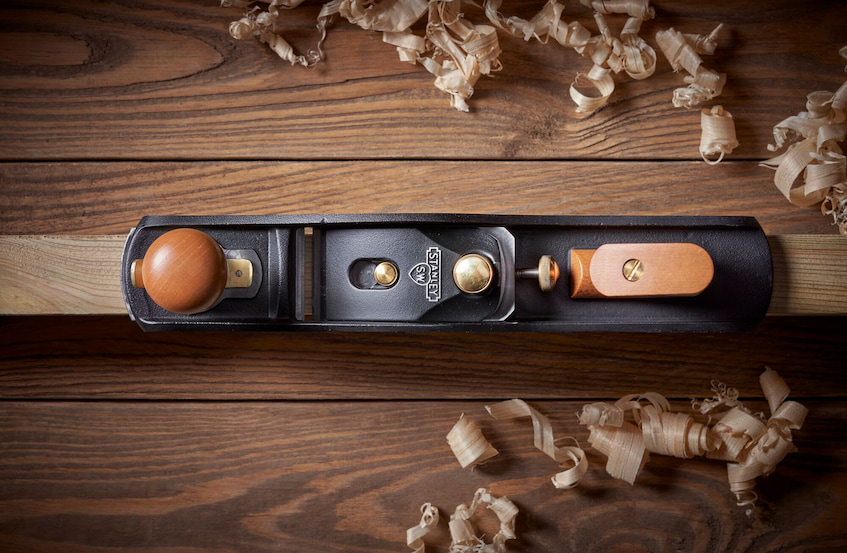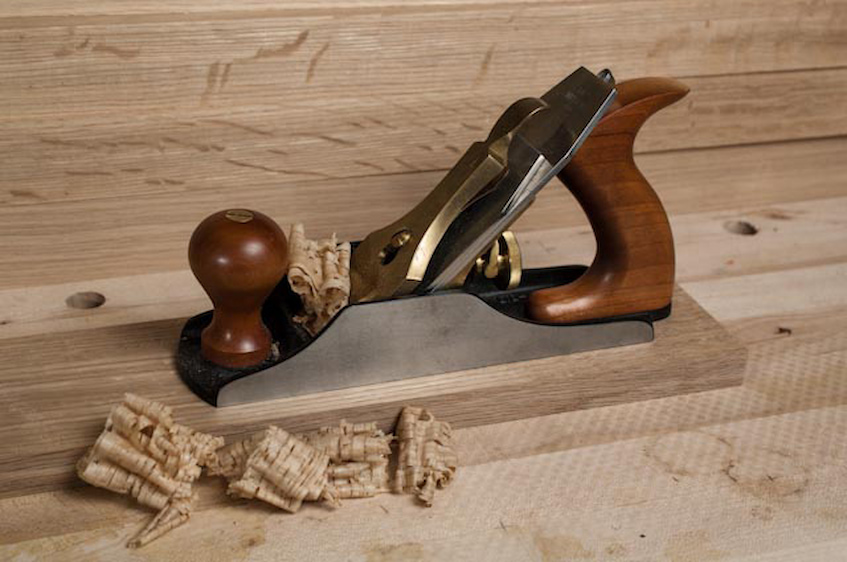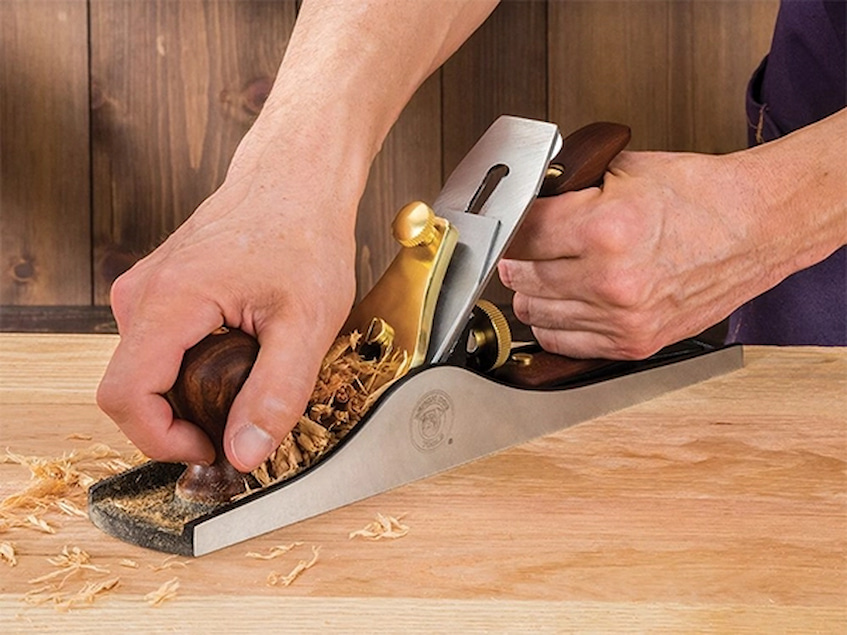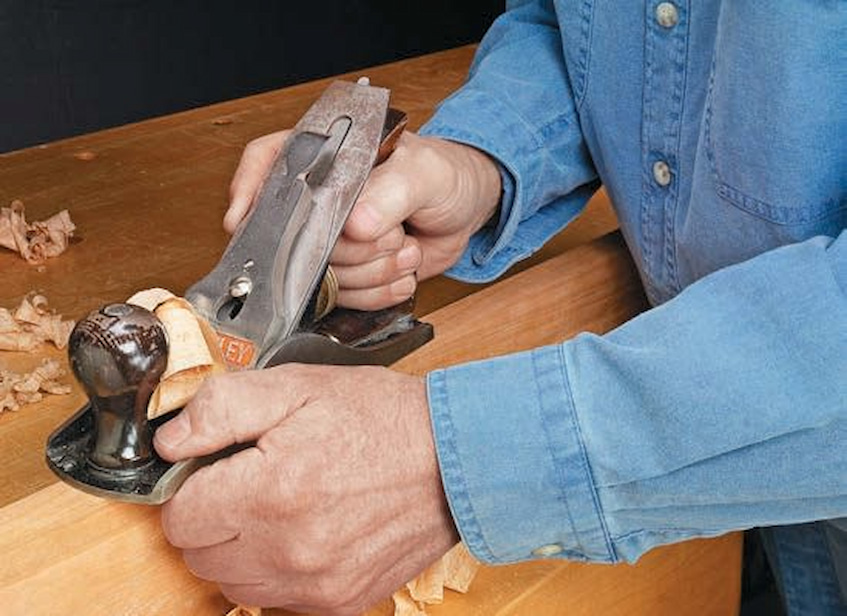
The Whats and Hows of Wood Planes
Power tools might be the first thing you grab when starting out a new woodworking project. They offer unrivalled speed and efficiency, so you’ll be mustering up new masterpieces within a matter of minutes. But where precision is called for you’re better off with traditional hand tools. These take things slow and also let you hone your woodworking skills so you can add a bit of personality to your workpiece. Often the first contact with the wood is with a hand wood planer. This is just one of the tools that have defied technology and time, and serve as a reminder that skill and patience are the backbones of crafting wood to your desired shape.
Contents
What is a Hand Plane?

Planes are woodworking tools that are tasked with the removal of excess materials, and getting the wood down to a smooth and level finish or ‘plane’. Hand planes require a bit of elbow grease and more time to get the job done but reward carpenters, joiners, woodworkers and avid DIY-ers with some exquisite results. When the job requires fast material removal, then there’s also the choice of electrically-powered planes.
A plane is essentially a cutting tool, and in hand versions, it can pass for a chisel held at an angle and fixed to either a wooden or metal frame. The purpose is to remove small pieces of wood with each stroke. The technique can be difficult to get right at first, but shaving off thin pieces of wood in calculated pushes (or pulls with Japanese planes) along the wood is a skill that many can master. While there are dozens of different types, each with specialist uses, the basic design of a hand plane hasn’t changed in centuries.
As mentioned, they consist of a cast-iron or wooden body, keeping all attached parts together. This includes the angled blade, a ‘frog’ or bed that attaches the blade to the body, a gripping handle at the back, and a front knob for blade adjustment doubling as a handle. These sit on the ‘sole’ or base of the planer. The ‘mouth’ is the opening where the blade protrudes from the sole and what makes the cuts. Different types of planes have a slight variation in this design.
Types of Hand Planes
Bench Planes

These are a wide category of planes and are often the first tools you’ll use in any woodworking project. They’re designed to be used on workbenches hence the name and come in handy when flattening, sizing, tapering and smoothing wood. They’re general-purpose woodworking planes, coming in a range of sizes and blade angles. And this is often the first wood planer for sale that you’ll be mulling purchasing. Typical examples include jack planes, one of the bigger types, used for quick stock removal and flattening and smoothing wood, smaller block planes used in finishing cuts and trimming, and jointer planes used in preparing and straightening the sides of boards before joining.
Joinery Planes
A Joinery wood planer for sale is a specialised tool used for creating or finishing joints, the type you’ll see in a handcrafted table or kitchen cabinets. This too is more of a category than a specific hand plane. They’re used once the stock is flattened and sized. Instances include rabbet (or rebate) planes for cutting and shaping rabbet joints in wood ends; plow (or plough) planes for creating channel grooves by removing material from the middle of a piece of wood; shoulder planes for trimming tenons in tight corners; and router planes for smoothing out sunken panels, for cutting recesses and smoothing the bottom of grooves.
Smoothing Planes

The cut joiner needs to be smooth. This is where smoothing planes come into the picture. They’re small to medium-sized and do one job better than all other planes – bringing the wood to a smooth finish. They remove large and small imperfections in the wood grain, Of course, this is not their only talent, as smoothing planes are handy as general-purpose woodworking tools and can be used for rougher stock materials removal, in effect doubling as a bench plane.
Moulding Planes
These are used for shaping and decorative work. This again encompasses a large category. More popular are spokeshaves used in shaping curved surfaces (such as wooden wheel spokes); compass planes for cutting along curves, snipe bills used for simple bead profiles or deepening gauges lines; and hollows and rounds used to create different types of moulding in architectural elements and furniture. There’s a huge number of mouldings and a hand plane for just about any type. Moulding planes get you quick and consistent results, and what you can’t achieve with one type is easily done with a custom scraper set with different cutting profiles.
Choosing a Hand Plane
When you’re set to buy a wood planer for sale, there are a few factors to take into consideration. Planes are sold in varying sizes, denoted by numbers, and the larger the plane the larger the number. Next is to consider the types of planes you’ll be using in your line of work, Most newbies start off with a basic bench plane, say a jack hand plane as a general-purpose tool, then move on to a block plane for finishing touches, and complete tasks with a specialty joinery or moulding plane.
Pay attention to build quality, the thickness and sharpness of the blade, and have the different parts are put together. Metal planes will undeniably create a bigger hole in your pocket but should last longer. Go for established brands and names in the woodworking business, before parting with your hard-earned cash.


No Comments